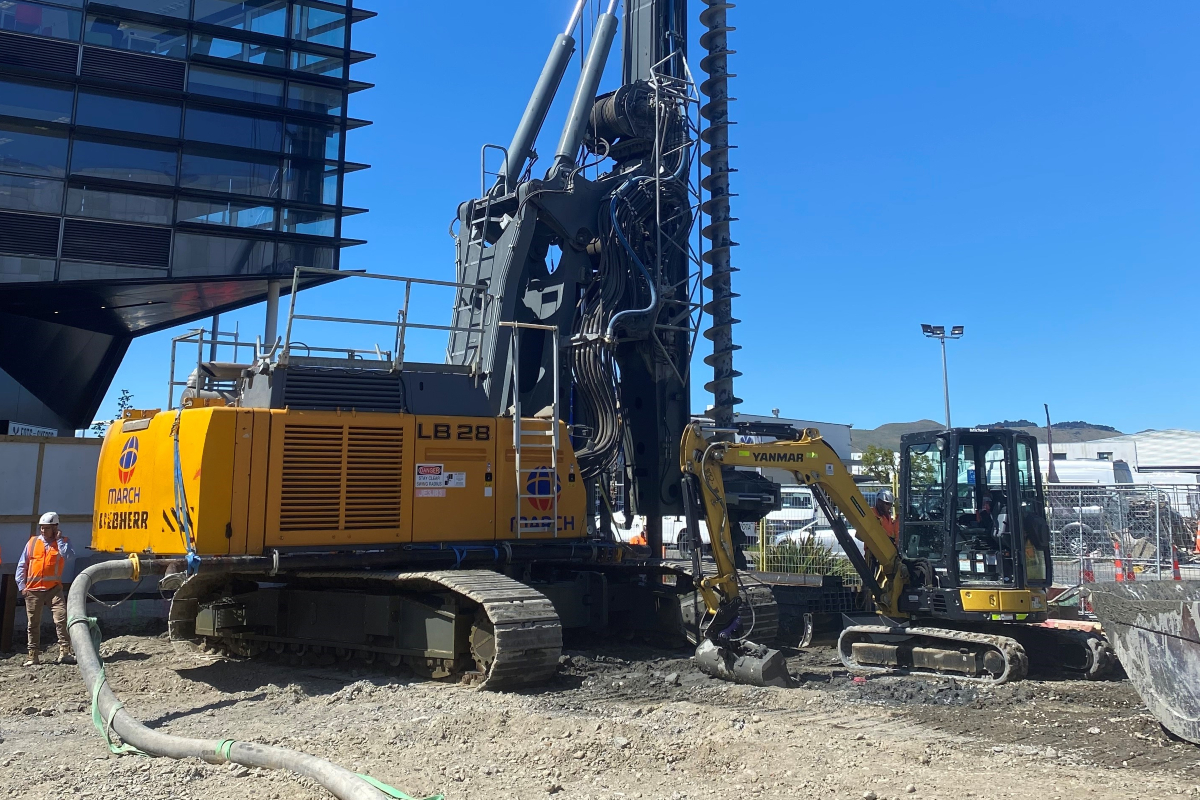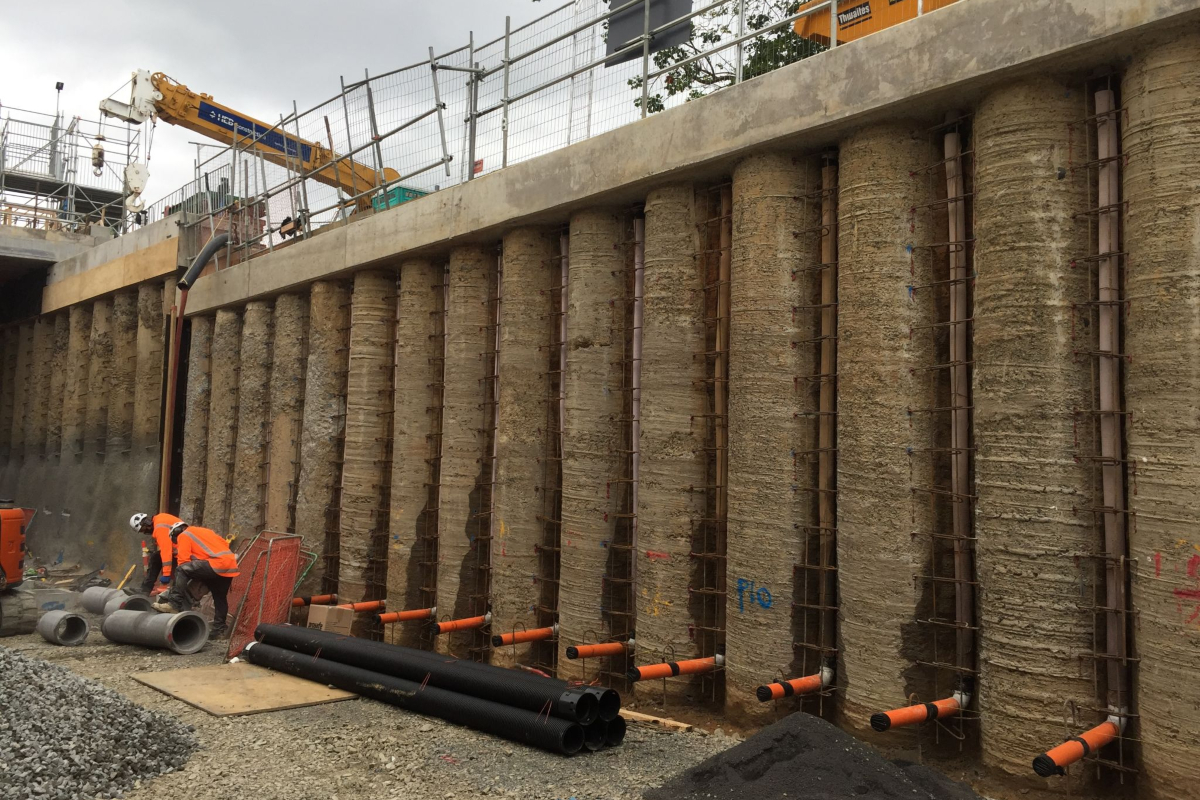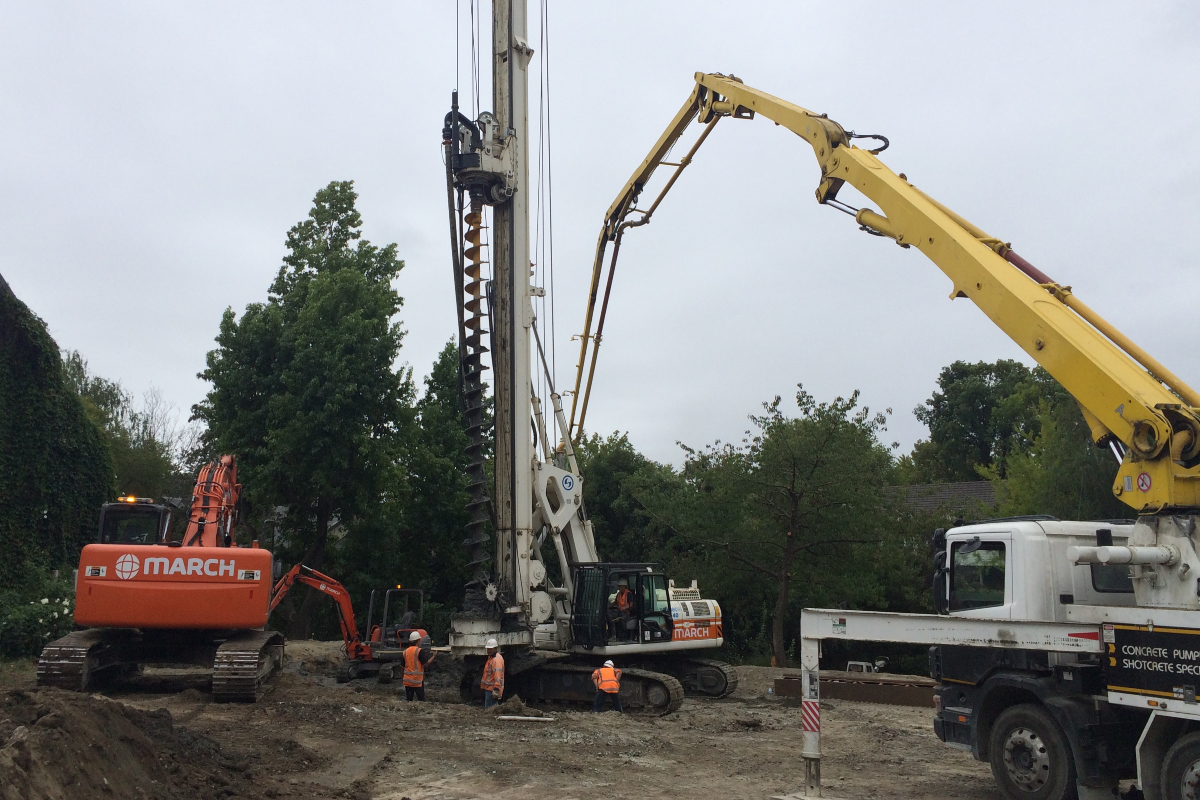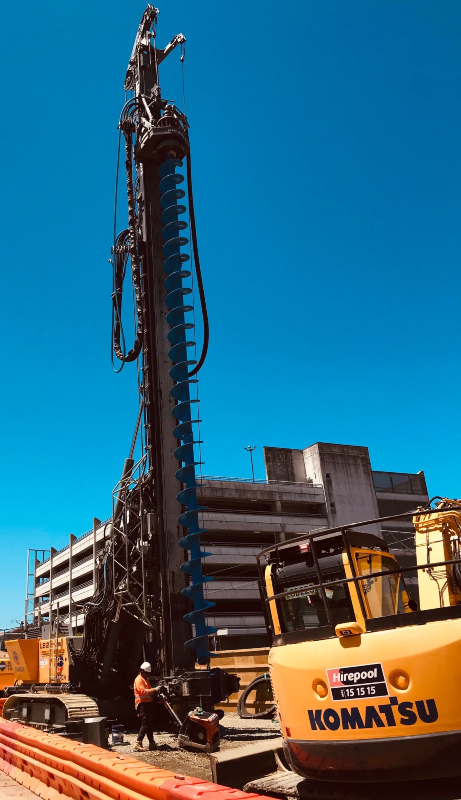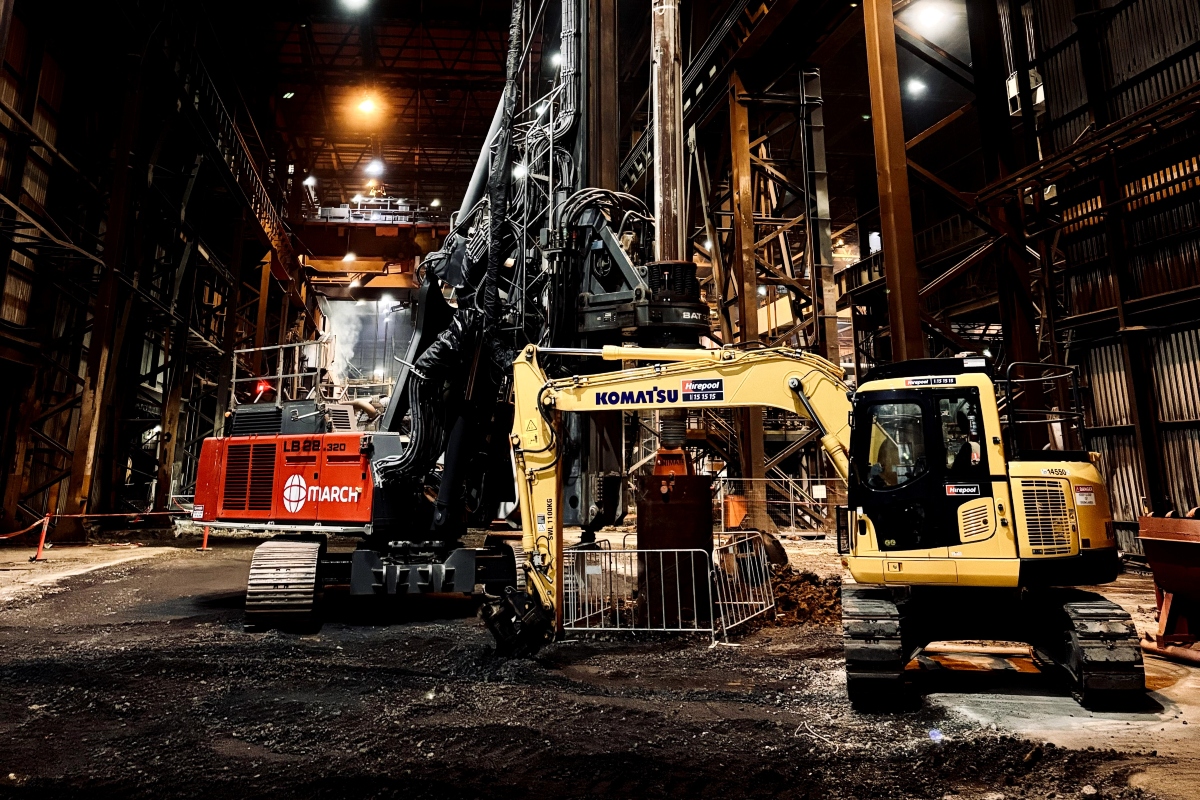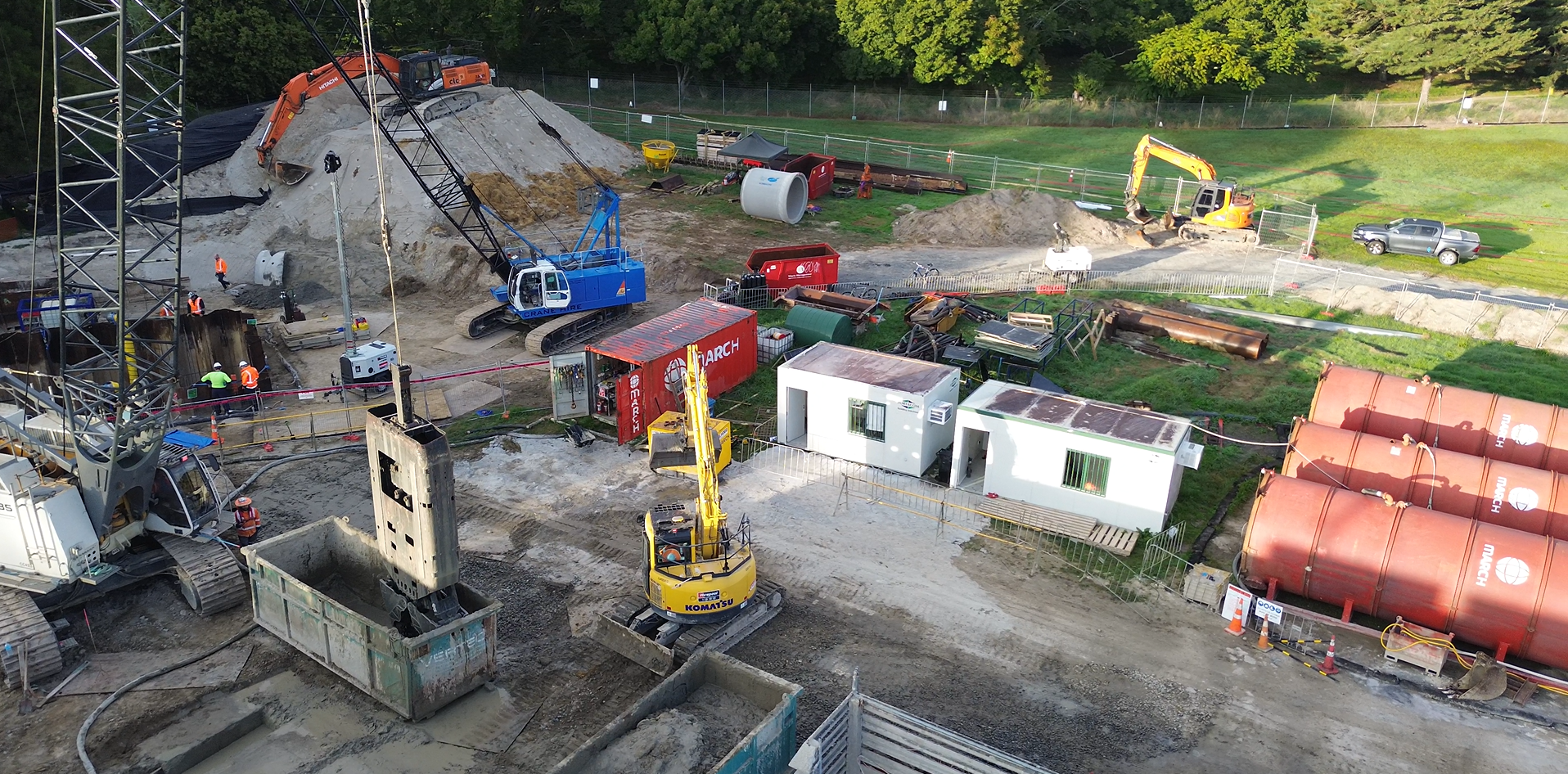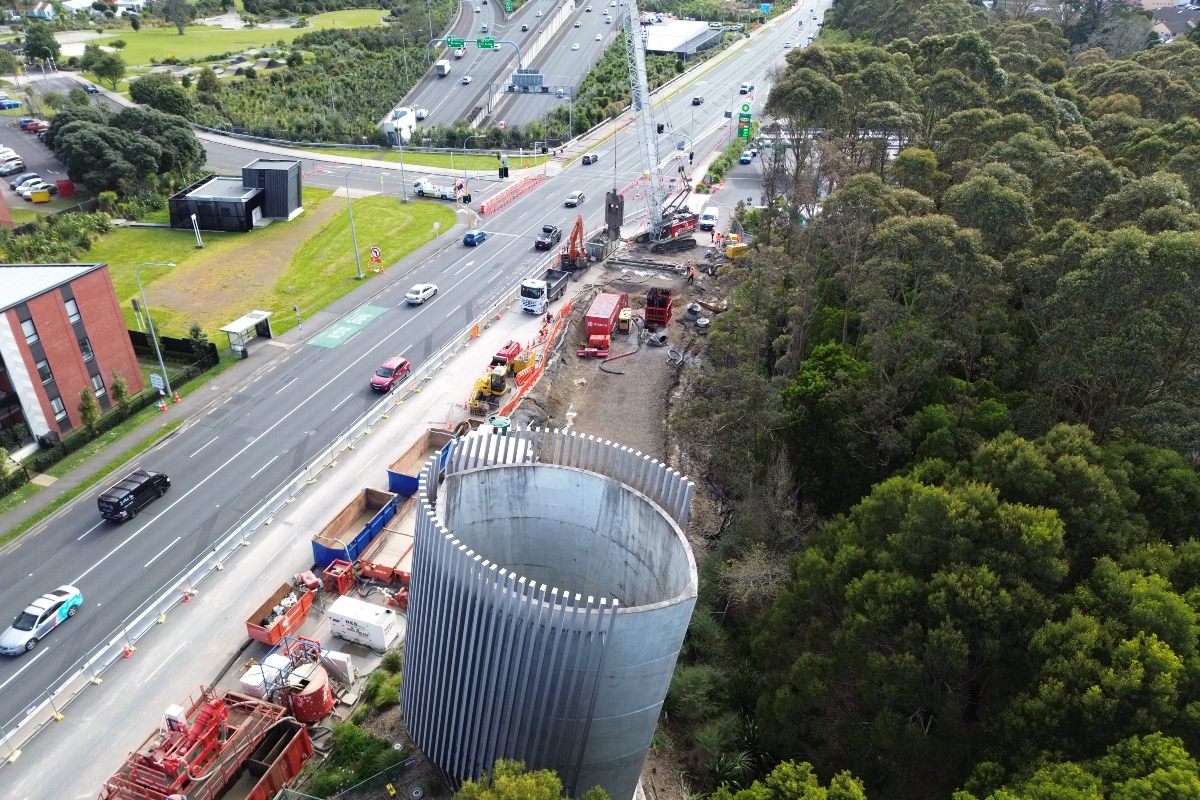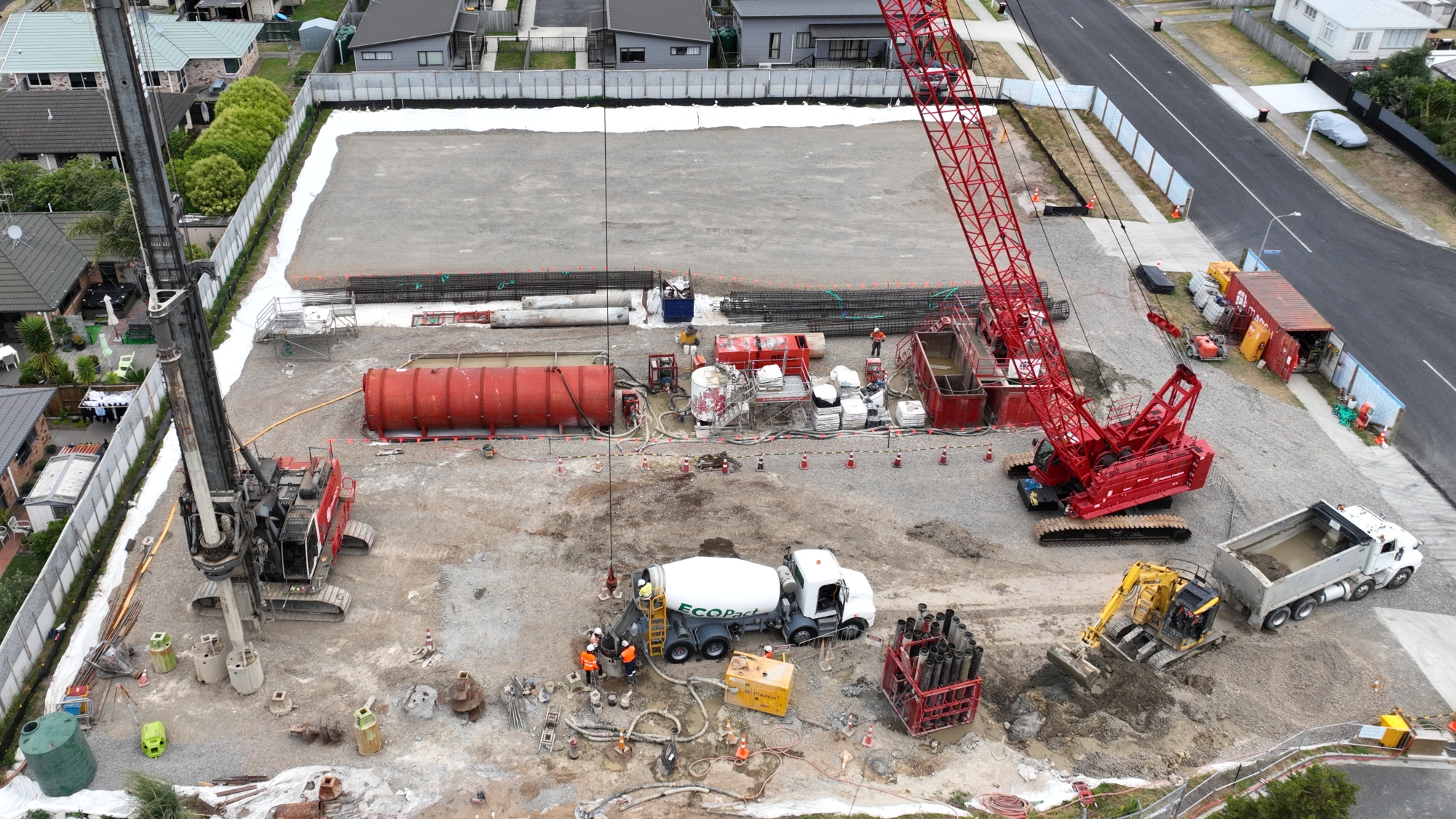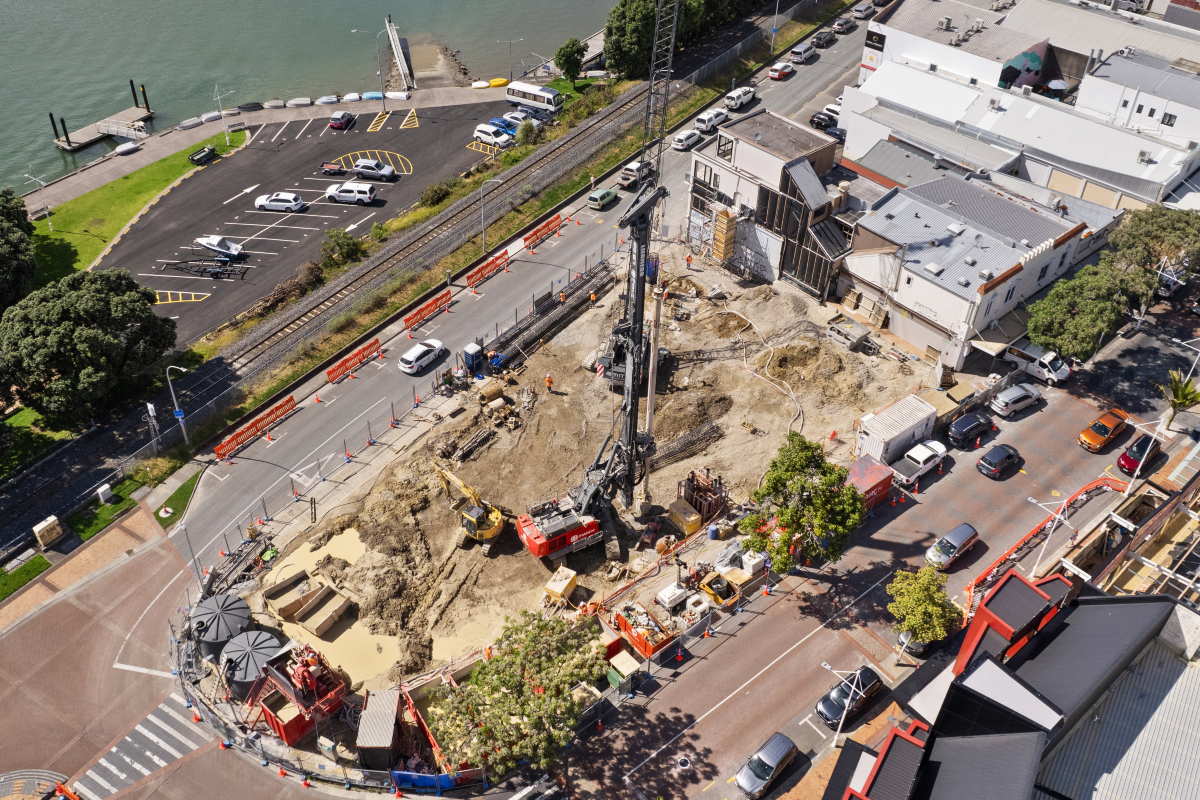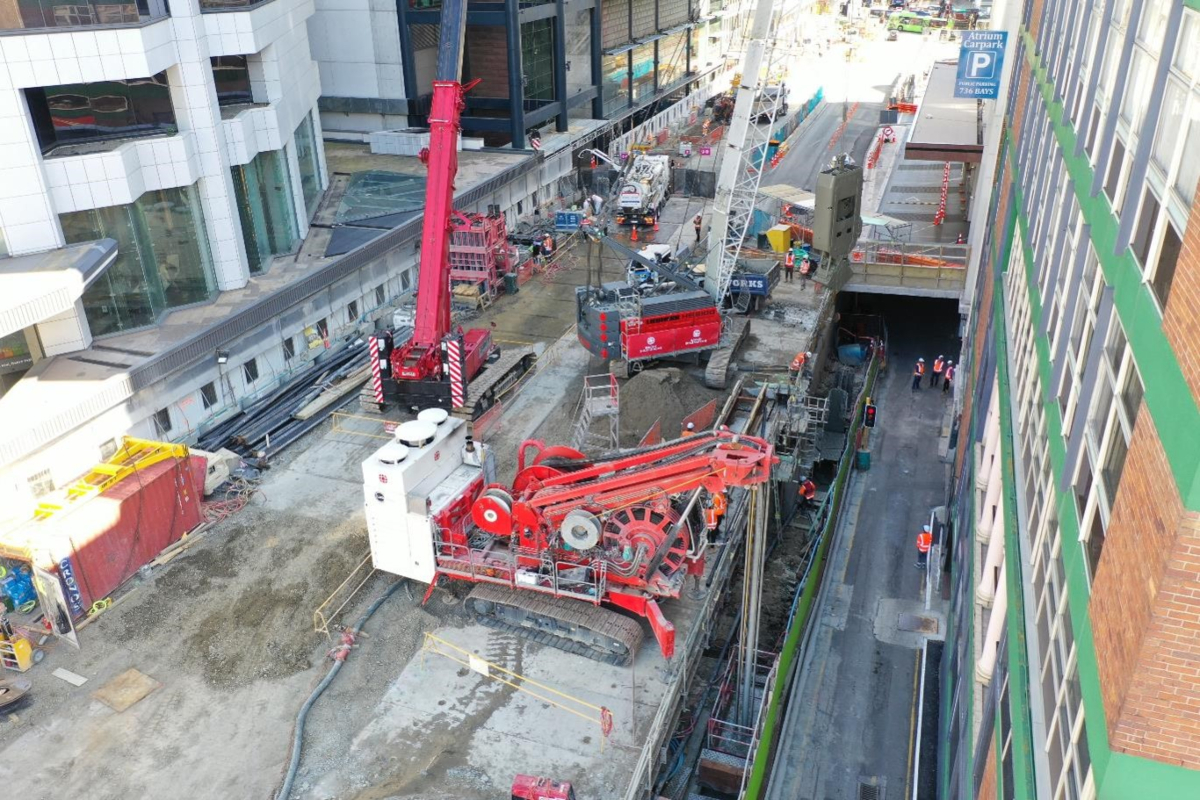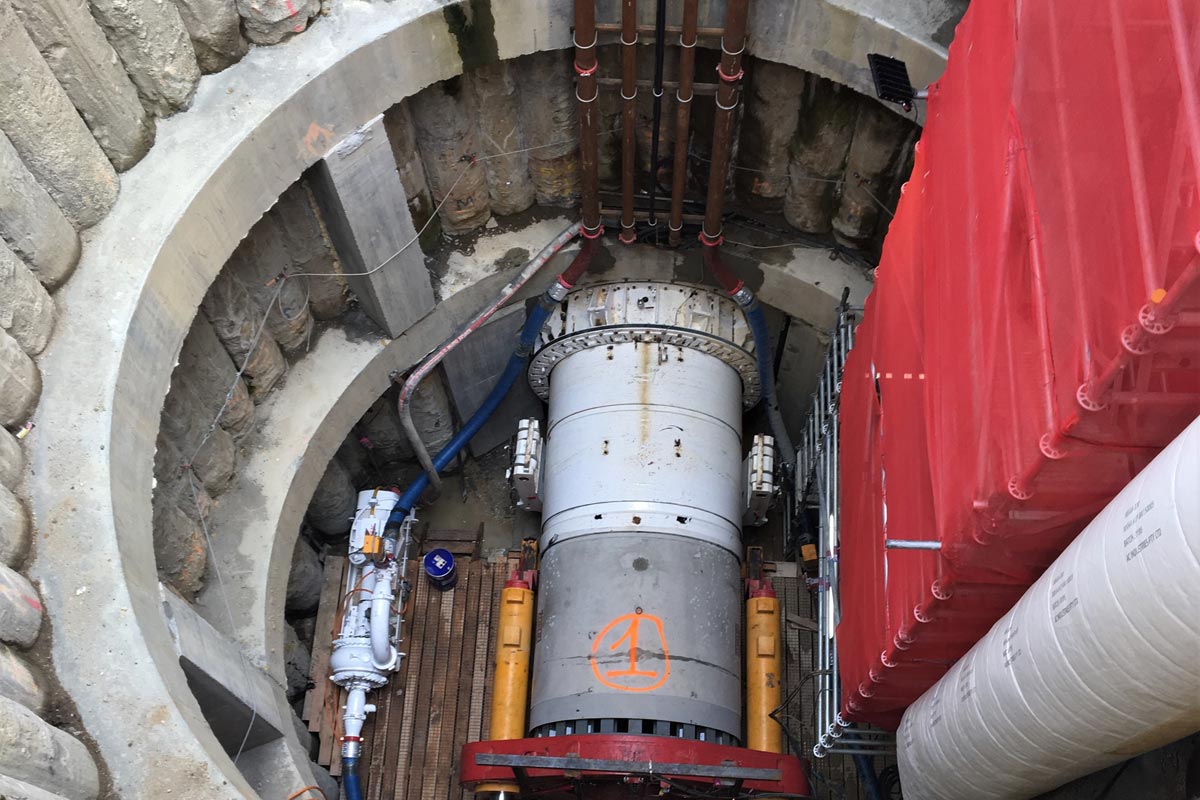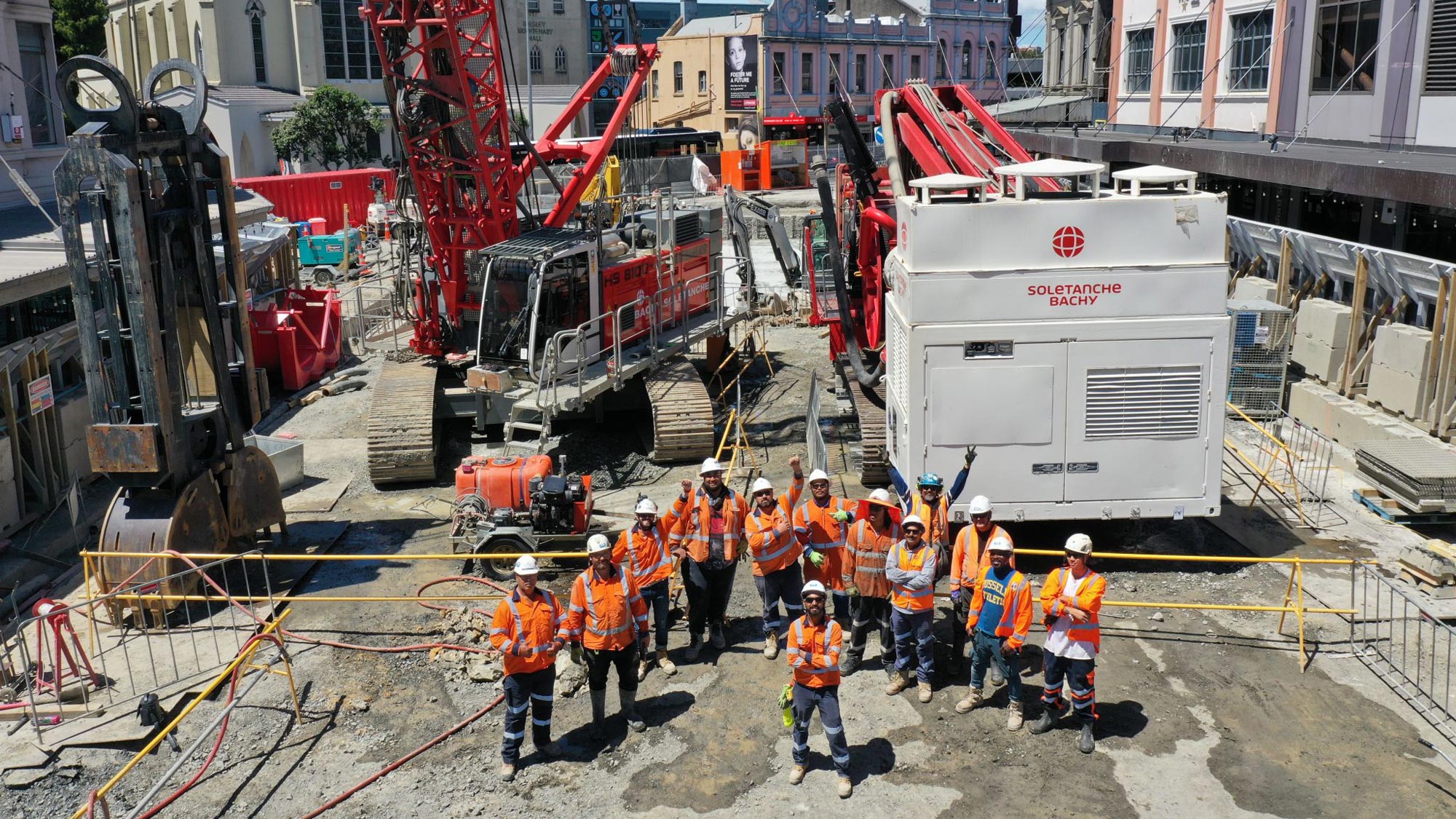Project Description
Continuous Flight Auger (CFA) Piling
CFA piles offer an economic, quick, low noise and vibration solution to constructing retaining walls or bearing piles for medium to highly loaded structures
The system eliminates the need to use support fluid or casings in cohesive soils, non-cohesive or water bearing soils. The process can be used for environmentally sensitive sites and/or working near existing structures.
Our processes
CFA piles are constructed by drilling a hollow stemmed auger into the ground to the required depth. As the auger penetrates into the ground, the rate of rotation vs penetration rate is monitored and controlled such that only the spoil displaced by the auger is brought to the surface. The auger filled with spoil generated during the construction process provides ground support for the bore thus eliminating the need for casings or support fluid.
Once the auger has drilled to the required depth concrete is pumped under pressure through the auger stem to the toe of the pile. The auger is then withdrawn in a controlled manner such that the supply of concrete is equal to the volume of the void left by the retracting auger and spoil. This is continued until the bore is concreted to ground level.
The soil that is flighted to the surface during the concreting process is cleared by an attendant excavator. A final scrape of the pile location is done to remove any residual soil at the surface once the auger has been fully extracted. A steel reinforcement cage is then plunged into the fluid concrete to the required level.
Our rigs are fitted with precision instrumentation to monitor drilling parameters, pile verticality and concrete pressure, volume and productivity in order to ensure quality is maintained during the construction process.

Related projects

